Laurie Baker (1917-2007) was an English-born architect, writer, and social activist who spent most of his life working in India. He is known for his innovative approach to sustainable architecture, which emphasized the use of local materials and techniques, low-cost construction, and eco-friendly design.
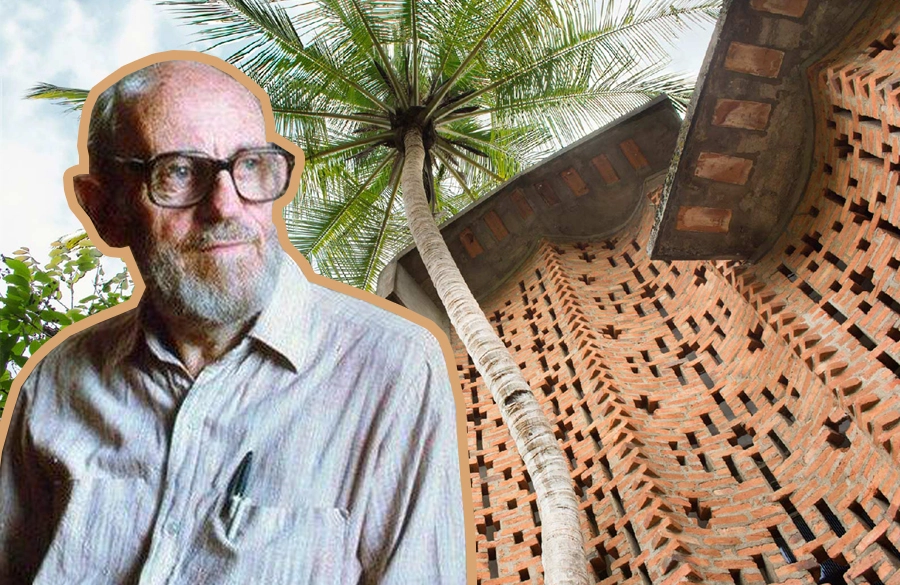
He is considered an important figure in the field of architecture because of his contributions to sustainable design, his pioneering work with alternative building materials, and his commitment to social justice and community empowerment. His legacy continues to inspire architects, designers, and social activists around the world.
If you want to know about the staircase design or landscape garden or requirements for disabled persons in a building, please click the link.
1) Early life and education of Laurie Baker
Laurie Baker was born in Birmingham, England in 1917. He grew up in a family of builders and developers, which likely influenced his later career path. As a young man, he studied architecture at the Birmingham Institute of Art and Design, where he developed an interest in modernist design and sustainable building techniques.
After completing his studies, Baker worked briefly as an architect in London before moving to India in 1945. There, he worked as a missionary and became interested in the country’s rich cultural traditions and diverse architecture. He also witnessed the poverty and housing crises faced by many of India’s urban and rural communities, which inspired him to focus on designing affordable and sustainable housing solutions.
Baker’s education and early experiences influenced his later work by instilling in him a deep respect for local traditions and materials, as well as a commitment to using architecture as a tool for social justice. He believed that architecture should be accessible to all people, regardless of their income or social status.
One notable achievement during this time was Baker’s decision to become a Quaker, which further solidified his commitment to nonviolent activism and social justice. His experiences as a Quaker informed his later work with disadvantaged communities, as he believed that architecture could be used to empower and uplift marginalized groups.
Overall, Baker’s early life and education laid the foundation for his later work as an architect, writer, and social activist. They instilled in him a passion for sustainable design, a commitment to social justice, and a deep respect for local materials and traditions.
2) Career and notable projects of Laurie Baker
After arriving in India in 1945, Laurie Baker began working as an architect in the southern state of Kerala. Over the course of his career, he designed and built a wide range of structures, from homes and schools to hospitals and churches. He was known for his innovative use of locally-sourced materials such as mud, brick, and bamboo, which he believed could be used to create sustainable, affordable, and aesthetically pleasing structures.
One of Baker’s most notable projects was the Gandhi Peace Foundation in New Delhi, which he designed in the 1960s. The building featured a range of sustainable design elements, including natural ventilation, rainwater harvesting, and a rooftop garden. Baker also designed numerous affordable housing projects for disadvantaged communities, such as the Hamlet Housing Project in Trivandrum, Kerala, which used a rat-trap bond technique that reduced the amount of bricks needed for construction.

Other notable projects by Baker include the Indian Coffee House in Thiruvananthapuram, the Land’s End Resort in Kerala, and the Silent Valley National Park Visitor Centre in Palakkad. Many of his projects were located in Kerala, where he spent most of his career, but he also worked in other parts of India and abroad.
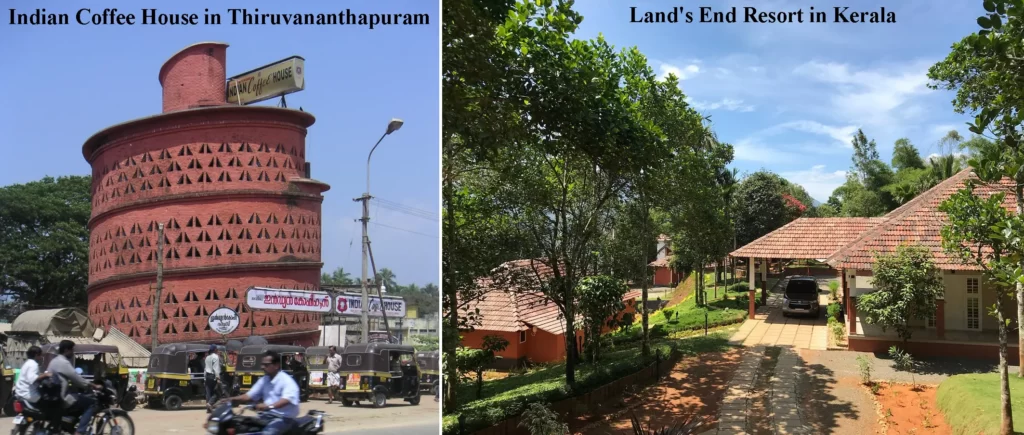

Baker’s design principles were heavily influenced by his work in India, where he was inspired by the country’s rich cultural traditions and diverse architecture. He believed that sustainable design required a deep understanding of local materials, climate, and cultural context, and he was known for incorporating traditional building techniques and materials into his designs.
He was also influenced by his work with disadvantaged communities, which taught him the importance of designing structures that were affordable, functional, and aesthetically pleasing. Overall, Baker’s career path was marked by a commitment to sustainable design and a belief that architecture could be used to address social and environmental challenges.
3) Philosophy and design principles of Laurie Baker
Laurie Baker’s philosophy and approach to architecture were grounded in a deep commitment to sustainability, social justice, and community empowerment. He believed that architecture should serve the needs of people, not just the interests of architects or developers, and that sustainable design was essential for addressing the social and environmental challenges facing communities around the world.
Baker’s approach to architecture was marked by a focus on low-cost construction, the use of local materials, and a respect for traditional building techniques. He believed that the most sustainable and affordable structures were those that were built using materials and techniques that were readily available in the local environment. This approach not only reduced the cost of construction but also helped to create structures that were better adapted to the local climate and cultural context.
One design principle that Baker developed and popularized was the rat-trap bond, a technique for laying bricks that reduced the amount of mortar needed and improved the insulation and stability of the structure. He also developed and refined techniques for using mud, bamboo, and other local materials to create sustainable structures that were functional, durable, and aesthetically pleasing. Baker’s focus on sustainable design and the use of local materials was ahead of its time, and his work has inspired a new generation of architects and builders around the world.
Another important aspect of Baker’s philosophy was his commitment to community empowerment and social justice. He believed that architecture should be used to empower people and communities, rather than reinforcing social and economic inequalities.
He worked closely with disadvantaged communities to design affordable housing and other structures that met their specific needs and aspirations. This approach helped to create structures that were not only sustainable and functional but also reflective of the cultural identity and values of the communities they served.
Overall, Laurie Baker’s philosophy and approach to architecture were marked by a deep commitment to sustainability, social justice, and community empowerment. He popularized and developed design principles that emphasized the use of local materials, low-cost construction, and community participation, which have had a lasting impact on the field of sustainable design.
4) Awards and recognition
Laurie Baker was widely recognized and honored for his contributions to the field of architecture and sustainable design.
Some of the awards and recognition he received during his lifetime include:
- Padma Shri Award (1990) – one of India’s highest civilian honors, in recognition of his contributions to architecture and social service.
- Global Award for Sustainable Architecture (2008) – awarded by the Association for Architecture and Development Studies for his pioneering work in sustainable architecture.
- Keralite of the Year Award (2008) – awarded by the Malayala Manorama newspaper for his outstanding contributions to society.
- Habitat Scroll of Honor Award (1992) – awarded by the United Nations Centre for Human Settlements for his work in affordable housing and community development.
- National Award for Excellence in Architecture (1988) – awarded by the Indian Institute of Architects for his outstanding contributions to the field of architecture.
These awards and recognition helped to bring greater attention to Baker’s work and philosophy, and cemented his reputation as a leading figure in sustainable architecture and community development. They also helped to inspire a new generation of architects and builders who were interested in pursuing similar approaches to sustainable design.
In the years since his death in 2007, Laurie Baker has continued to receive posthumous recognition for his contributions to the field of architecture and sustainable design.
In 2019, the Laurie Baker International School of Habitat Studies was established in Trivandrum, Kerala, to promote the study and practice of sustainable architecture and community development. The school serves as a testament to Baker’s enduring legacy and influence on the field of sustainable design.
5) Contributions to social activism
Laurie Baker’s contributions to social activism in India were as significant as his contributions to sustainable architecture. He believed that architecture should be used as a tool for social change and worked tirelessly to create housing and other structures that served the needs of disadvantaged communities.
Baker’s architecture was intertwined with his social activism in that he saw design as a means of addressing social inequalities and empowering marginalized communities. He believed that architects had a responsibility to create structures that were not only sustainable and functional but also reflective of the cultural identity and values of the communities they served. This approach helped to create structures that were better adapted to the local climate and cultural context and that met the specific needs and aspirations of the people who lived in them.
One example of Baker’s work with disadvantaged communities is the Hamlet housing project in Trivandrum, Kerala. The project was designed to provide affordable housing for low-income families and was built using local materials and traditional building techniques. The structures were designed to be energy-efficient and incorporated features such as rainwater harvesting and waste recycling. The project not only provided much-needed housing for low-income families but also helped to promote sustainable development and community empowerment.
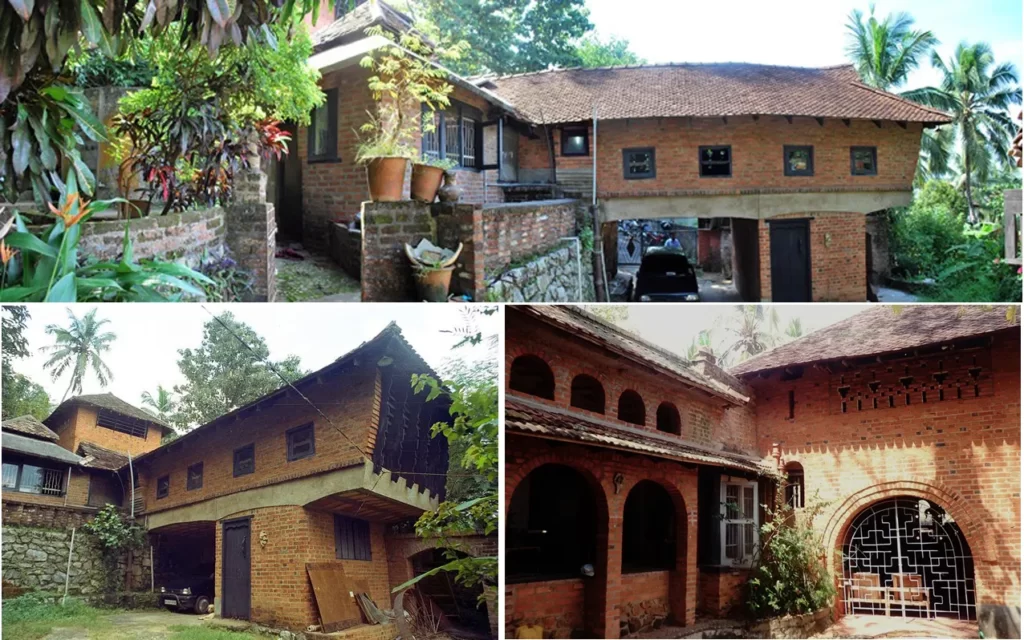
Baker also worked closely with the tribal communities in Wayanad, Kerala, to design housing and other structures that reflected their cultural identity and values. His approach involved working closely with the communities to understand their needs and aspirations and incorporating these into the design of the structures. This approach helped to create structures that were not only sustainable and functional but also reflected the cultural heritage and values of the communities they served.
Overall, Laurie Baker’s contributions to social activism in India were marked by a deep commitment to creating structures that served the needs of disadvantaged communities and promoted sustainable development. His approach to architecture was intertwined with his social activism, and he saw design as a means of addressing social inequalities and empowering marginalized communities. His work with disadvantaged communities such as the Hamlet housing project and the tribal communities in Wayanad, Kerala, serves as a testament to his enduring legacy and influence on the field of sustainable design and social activism.
6) Legacy and influence
Laurie Baker’s influence on sustainable architecture in India and beyond is significant and enduring. His focus on sustainability, low-cost construction, and the use of local materials has inspired architects and designers around the world to adopt similar approaches to sustainable design.
Many architects and designers have been influenced by Baker’s work, including Sanjay Prakash, who worked with Baker early in his career and has gone on to become a leading sustainable architect in his own right. Other architects, such as Bijoy Jain of Studio Mumbai and Anupama Kundoo, have also been influenced by Baker’s approach to sustainable design and have incorporated similar principles into their own work.
Baker’s design principles continue to be relevant today, particularly in the face of pressing global challenges such as climate change, rapid urbanization, and social inequality. His focus on sustainability, low-cost construction, and the use of local materials is particularly relevant in developing countries, where access to resources and capital is often limited.
Baker’s rat-trap bond technique, which involves using hollow bricks in a way that creates air pockets for insulation, is a good example of a design principle that continues to be relevant today. The technique has been widely adopted in India and other developing countries as a means of reducing construction costs while improving energy efficiency.
In addition, Baker’s focus on community engagement and empowerment continues to be relevant today, particularly as more architects and designers recognize the importance of working closely with communities to understand their needs and aspirations. Baker’s legacy has helped to inspire a new generation of architects and designers who are committed to creating sustainable structures that serve the needs of communities and promote social and environmental justice.
Overall, Laurie Baker’s influence on sustainable architecture in India and beyond is profound and enduring. His design principles and philosophy continue to inspire architects and designers around the world to adopt more sustainable and socially responsible approaches to design, and his legacy serves as a testament to the power of design to create positive social and environmental change.
7) Major Works of Laurie Baker
Laurie Baker is known for his innovative and sustainable architectural designs that utilized local materials, low-cost construction techniques, and emphasized the importance of community engagement. Some of his notable works include:
Centre for Development Studies (CDS), Thiruvananthapuram:

The CDS is an academic and research institution that focuses on social and economic development. Baker designed the campus in the early 1970s, using traditional materials like exposed brick, terracotta tiles, and timber. The campus was designed to be energy-efficient, with natural ventilation and shading.
Indian Coffee House, Thiruvananthapuram:

The Indian Coffee House is a popular restaurant chain in India. The Thiruvananthapuram branch was designed by Baker in 1957 and has become an iconic example of his work. The design utilized local materials, including brick and timber, and features a distinctive sloping roof.
Hamlet Housing Project, Trivandrum:

The Hamlet Housing Project was designed by Baker in the 1980s for low-income families. The project consisted of 24 houses, each with two rooms, a kitchen, and a bathroom. The houses were designed to be energy-efficient and utilized natural ventilation and lighting.
Save the Children Balwadi, Pune:

The Save the Children Balwadi is a preschool for underprivileged children in Pune. Baker designed the school in the early 1980s, using locally available materials like brick, stone, and mud. The design utilized natural ventilation and lighting and featured a central courtyard.
The Indian Institute of Management (IIM) Kozhikode:

Baker was one of the architects who designed the IIM Kozhikode campus in the late 1990s. The campus was designed to be energy-efficient, with features like solar panels, rainwater harvesting, and natural ventilation.
Gandhi Smarak Nidhi Museum, New Delhi:
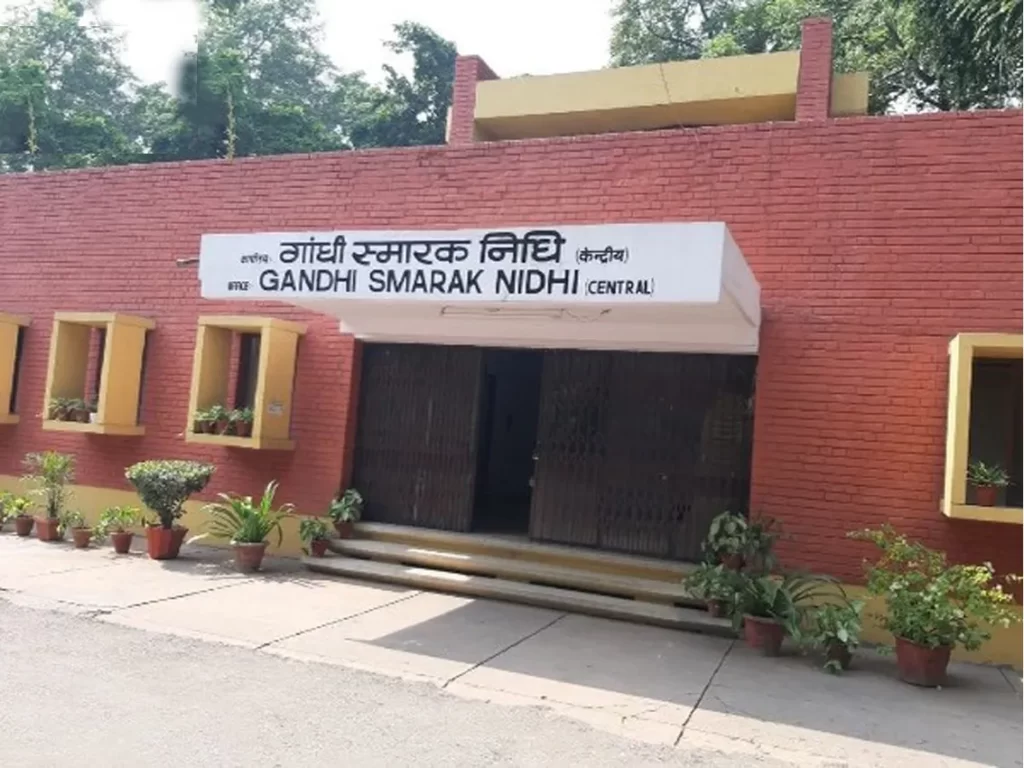
The Gandhi Smarak Nidhi Museum was designed by Baker in 1961 as a tribute to Mahatma Gandhi, India’s iconic leader. The museum was designed using locally available materials and features a series of courtyards that allow natural light and ventilation.
Kerala Folklore Museum, Kochi:
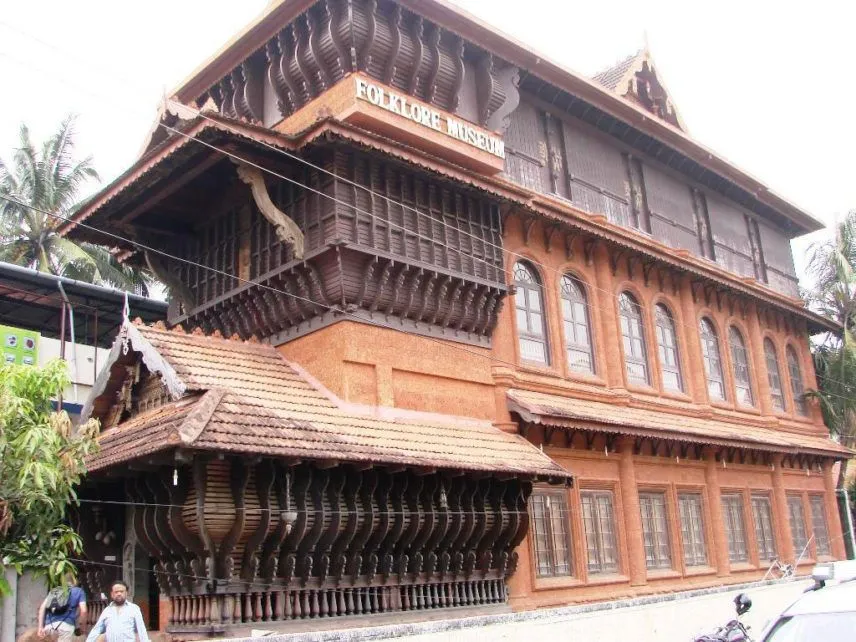
The Kerala Folklore Museum is a popular museum in Kochi that showcases the rich cultural heritage of Kerala. Baker designed the museum in the 1990s, using traditional materials like laterite stone, terracotta tiles, and timber. The museum features a series of courtyards that allow natural light and ventilation.
The Travancore Medical College Hospital, Kollam:

The Travancore Medical College Hospital is a modern medical facility located in Kollam, Kerala. Baker designed the hospital in the 1990s, using energy-efficient materials and techniques like natural ventilation and lighting.
These works highlight Baker’s innovative and sustainable approach to architecture and his commitment to using locally available materials and techniques to create structures that are energy-efficient, cost-effective, and socially responsible. Baker’s legacy continues to inspire architects and designers around the world to create buildings that are sustainable, functional, and serve the needs of their communities.
8) Conclusion
Laurie Baker was an architect, writer, and social activist who made significant contributions to sustainable architecture in India. His focus on sustainability, low-cost construction, and the use of local materials has inspired architects and designers around the world to adopt similar approaches to sustainable design.
Baker’s philosophy and approach to architecture emphasized community engagement, empowerment, and social responsibility. He worked closely with disadvantaged communities, such as those living in slums and rural areas, to design structures that served their needs and promoted social and environmental justice.
Throughout his career, Baker received numerous awards and recognition for his work, including the Padma Shri, India’s fourth-highest civilian award. His design principles, such as the rat-trap bond and the use of mud mortar, continue to be relevant today and have been widely adopted in India and other developing countries.
Laurie Baker’s legacy and influence on sustainable architecture and social activism are profound and enduring. He is an important figure in the field of architecture and social activism because of his commitment to sustainability, community engagement, and social justice. His work continues to inspire architects and designers around the world to adopt more sustainable and socially responsible approaches to design.
Overall, Laurie Baker’s life and work serve as a testament to the power of design to create positive social and environmental change. His legacy will continue to inspire future generations of architects and designers to create structures that are sustainable, socially responsible, and serve the needs of their communities.